Gurabo is great. I actually spent an entire day there with my wife Zoraida and we had a great time. And for a town that’s supposedly “on the way to somewhere else” it has a great sports museum, a magnificent church that’s 200 years old, a bakery with a brick oven that’s over a century old, a gallery showing the history of the town in paintings and “el cerro” a 149-step stairway that people from all over the world just love to climb. Oh, and did I mention that all of that is in a small town that people just pass by? Really?
My wife and I are on a mission to explore every town in Puerto Rico. We’re also on a mission to visit every U.S. National Park. But that takes a little more time and a lot more cash. So far we’ve visited 22 (parks, that is).
So, while we fatten our piggy bank, we thought we’d do a little local tourism and produce content for Puerto Rico By GPS.
Our first two adventures were in the towns of Carolina and Trujillo Alto (you can watch the videos here). We thought we’d go around San Juan in a clockwise fashion, then do it again in a larger circle and do it again and again until we cover the entire Island. Why circle San Juan? Well, because that’s where we started and we have lots of information already. I even wrote a book titled “The Old San Juan Walking Tour” that’s available in English and Spanish. It’s like having your own personal guide to show you every little detail of the Old City at your own pace.

Video Button
Back to Gurabo. This article contains both photos and short videos. You can easily miss the videos because they are activated by thumbnails that look like photos. The main difference is the blue round icon in the center of the thumbnail. Click on those and the video popup window will open. Clicking on the others will reveal a large copy of the photo. There is also an extensive video of Gurabo that you can watch here.
There are two ways to do what we do. You can go at it like a regular tourist and write about your experience, or you can receive the cooperation of each municipality. Most people don’t bother and just go at it alone. Those are the videos and articles that you find on most blogs and on social media. And the truth of the matter is that, even if you do try to contact the municipalities, most most of them just ignore you. So why bother? It’s their loss.
We actually take the time to write to each municipality in advance, let them know that we’re coming and give them the opportunity to participate. If they do, well… they get to influence our final product. And if they don’t, well… it’s like Yelp, they get to live with whatever tourists write.
This visit was of the second variety. I wrote a short email to Mayoress Rosachely Rivera Santana and received an answer the very next day. I couldn’t believe my eyes! On the morning of December 8 we met with Mrs. Glenda Villafañe, from the Gurabo Economic Development Department, who in turn introduced us to Mrs. Rimary García, a chubby fellow called Don Ismael (I didn’t catch his last name) and Mr. Rubén Santos of the Gurabo Tourist Department. They were all wonderful people, but what really surprised us was that such a small town would actually have a tourism department at all, when other larger ones don’t. Santos then proceded to spend most his day with us and showed us every important corner of this beautiful town.
Ruben turned out to be an amazing guy, who’s an accomplished and prolific painter, the town’s historian and an all around expert in all things Gurabo and Puerto Rico. He was also an amazing host who went out of his way to make us feel welcome.
The history of Gurabo goes back to the 17th Century when a group of Spanish settlers established a settlement between the Gurabo and Loíza rivers (Río Grande de Loíza, that is). Later on the group splintered and a part of them migrated east across the Gurabo river to a hill called “el piñal”. There they built the “Dulce Nombre de Jesús” parish.

Part of the settlers moved back across the Gurabo river to a place called “Barrero” where they established the town of Caguas. We’ll cover Caguas in a later post. The rest remained at “El Piñal” which became the town of Gurabo in 1814. In 1822 they erected the San José parish. We were unable to see the interior of the parish because it’s under renovation after 200 years of continuous operation.
Many Puerto Ricans falsely believe that Gurabo was originally a part of Caguas. But, as history shows us, both towns have a common origin. However, Gurabo was badly affected by Puerto Rico’s 1865 cholera epidemic as well as by various hurricanes throughout its history.
This led the Island’s Legislature to eliminate the municipality and annex the town to Caguas in 1902. Three years later the measure was revoked and in 1905 Gurabo regained it “sovereignty”. That’s probably where the false belief came from.
Like many of the towns surrounding San Juan, Gurabo is considered a “dormitory” town. “Dormitories” are towns where the people that work in San Juan go to after work. However, Rubén was quick to point out that those people have children that go to school in Gurabo. They also buy homes in Gurabo and participate in every aspect of the local economy. So being a “dormitory” isn’t a bad deal after all.
Our first stop was in front of the original City Hall built in 1854. Back then it was known as “la casa del rey” (the king’s house) as it represented Spanish rule on the Island. Atop the building there’s a bell tower with an antique french clock built in 1900. The clock is one of a pair that were installed at the city halls of Gurabo and Vieques. Vieques is an island municipality to the east of the main island that we’ll cover in a later post.
The clock is a tower model created by french clockmaker J. Bourrett which was finally installed in 1910. It actually works, albeit it was a little ahead when we got there. According to Rubén, the town has a clock keeper that calibrates it every 8 days. People from different parts of the world have come to see the clock as it is one of only two ever built.
Like most towns in Puerto Rico the church is built on one side of the square (with the altar facing east). However, City Hall, instead of being at the opposite side of the square, is actually across Santiago street.
Right next to the old City Hall building is the Gurabo Sports Museum, one of two that we have in Puerto Rico. Ruben was quick to point out that the quality of the polyurethane figures at the Gurabo museum is way superior to the ones at its Guaynabo counterpart. Guaynabo is a town west of San Juan that we’ll cover in a later post.
Our guide inside the museum was Mr. David Calderón Álvarez, who could easily be a radio announcer ‘cause he has “the voice” as they say in the biz. The fact that he knew every detail about each athlete didn’t hurt either.
The building where the Gurabo Sports museum is today was originally a lodge. Later on it became a bank. Hence, the original vault is still in use today to keep the museum’s most precious pieces and olympic medals.
Walking through the museum is like stepping through history. Dozens and dozens of Gurabo’s most accomplished athletes are presented in such a way that they seem to be alive. The degree of detail is simply mind boggling.
The coverage starts with the Island’s original Taíno population and ends with modern day heroes.
- Gurabo Sports Museum
- Gurabo Sports Museum
- Gurabo Sports Museum
- Gurabo Sports Museum
- Gurabo Sports Museum
- Gurabo Sports Museum
- Gurabo Sports Museum
- Gurabo Sports Museum
- Gurabo Sports Museum
Even the staircases at “el cerro”, that I mentioned during the introduction, serve a practical purpose, as athletes from the Ana G, Méndez university campus west of town use them as a training ground for their track and field runners.
Upon leaving the Gurabo Sports Museum we crossed over to “La Plaza De Los Próceres” (Hero Square, if you will), which is one the nicest in Puerto Rico. It has four statues, one on each corner including Luis Muñoz Marín, .
In case you’re wondering why that name keeps coming up, it’s because many Puerto Ricans still consider him the best governor the Island has ever had. The other three heroes are Jaime Serrano (former mayor of Gurabo for 30 years), Luis A. Ferré (former governor for the Statehood Party and Ángel Viera Martínez (former Speaker of the House Of Representatives of Puerto Rico).
After leaving the square we walked over to “Pan Carrasquillo” a family-owned bakery, established in 1903, where everything is made following artisanal methods in a brick oven built over a century ago. The bread is the traditional “pan de agua” (known to most Americans as french bread) but it has a particular texture that’s unique to “Pan Carrasquillo”. The outside is firm and crisp, but it doesn’t break into thousands of crumbs when you bite it. The inside is soft and delicious, with a taste that can only be achieved in a brick oven.
- Pan Carrasquillo sterfront
- Bread loafs ready for the oven
- Brick oven
From there our next stop was at the Gurabo Culture and Fine Arts Development Center. Originally it was a public school, built in 1948, and named after (you guessed it) then governor Luis Muñoz Marín. Muñoz Marín found the move boastful and asked for the name to be removed. The name had been embedded into the concrete (so it was never physically removed). However, the name of the building was changed to Luis Muñoz Rivera (Muñoz’s father). After the death of Luis Muñoz Marín, in 1980, the school was once again named Luis Muñoz Marín.
In 1986 the building ceased to be a regular school and it was converted into the Gurabo Culture and Fine Arts Development Center. The center offers clases in art, painting, cartooning, pastry, all kinds of dancing, modelling and much, much more.
Upon entering the center you are met by a large atrium with two staircases on the sides. On the second floor there are four enormous paintings, and several smaller ones, that make up the Gurabo Bicentennial Hall, in Spanish “la sala del Bicentenario del Municipio de Gurabo”, a shining example of how storytelling and painting can be combined into a powerful teaching tool. Gurabo is the only municipality in Puerto Rico that has such a hall, and I suspect that it’s because Gurabo is the only town with someone like Rubén Santos. That’s right. The guy that painted those marvelous pieces was standing right next to us.
Santos studied painting at the University of Puerto Rico and worked in Baltimore, Maryland painting billboards for an ad agency, of all things. He also perfected his technique at the Maryland College of Art. According to Santos his years painting very large pieces prepared him for something like what you’ll see at the Gurabo Bicentennial Hall. The paintings are humongous and they describe the town’s history in great detail, from the original native settlers to present.According to Santos, most painters, who paint regular size paintings, cant’t paint something of that size.
But there’s something more. Upon returning to Puerto Rico in 1992, Santos enrolled in the history program at the University of Puerto Rico and became an expert on the subject. Therefore, each piece is documented through primary historic sources. So his paintings aren’t only spectacular, but they are also historically accurate. The entire process to create the paintings took over 10 years. Santos took the time to explain each piece, and in doing so he took us through the history of Gurabo, from the original native settlers to the foundation of the town.
After leaving the Gurabo Bicentennial Hall we finally went to the famous “El Cerro”. “El Cerro” is Spanish for “the steep mountain”, which is exactly what it is. As Gurabo kept growing, more and more settlers arrived to work the land. Many of them weren’t even settlers. They were actually slaves.
“El Cerro” is a poor community and it has always been. The land was granted by the town’s rich people so that the poor people (mostly freed black slaves) could establish their homes. There was no sanitary plumbing and most houses were rustic shacks. The famous steps, that are so popular today, were actually built in 1948. Before that there were unpaved streets that became mudslides during the rainy season.
- El Cerro
- El Cerro
- El Cerro
Many tourists make the trip to Gurabo just to climb the famous steps. But now you know better. There are many additional places worth exploring in this wonderful town. Then, if you still wish to climb the steps be forewarned of the following: there are 149 steps to the very top so bring confortable shoes, a wide brimmed hat, sun block and plenty of water. And if you have heart trouble don’t even think of it.
Second, don’t go it alone. Like many other cities around the world, Gurabo has its share of crime. So consult the Gurabo Tourism Department before venturing into the “El Cerro” area.
You can reach them at 787–712-1100, ext. 268. Or write rgarcia@gurabopr.com or mrodriguez@gurabopr.com.
Reaching Gurabo is easy. If you’re coming from Isla Verde, take the Teodoro Moscoso Bridge. If you’re coming from Condado or Old San Juan your best bet is through the Minillas Tunnel. Either way, you’ll end up on State Road 18 going south. Stay on the left two lanes. After a few miles you’ll take the exit left towards Toll Road 52, also going south.
Stay on this road until you find exit 14 on your right. That will put you on State Road #1 going south. Take the middle lane, go under the bridge and take the exit towards the town of Humacao. Now you’ll be going east on Road #30. Take the middle lane.
Continue on Road #30 until you see Exit 7. Stay on the left hand side until you reach the first intersection marked “Gurabo Centro”. Turn left and continue straight until you reach the first traffic light. Turn right and you’ll be on Road #189 going east. Continue until you reach the corner with Calle Santiago (that’s Santiago street in English). Turn left and you’ll see San José Parish on your right hand side.
Make sure to copy the coordinates for your hotel before leaving in the morning. That way you be able to return safely in the evening.
Finally, If you enjoyed this post, and you plan to visit Puerto Rico —and the town of Gurabo— in the near future, you’ll find ample information on this website. You can also book flights, hotels & car rentals at great prices through the banners on the right hand column.
And yes, they are affiliate links. That means that I make a small commission, while you pay exactly the same that you’d pay anywhere else. That way you get to return the favor without spending an extra dime.
Enjoy Puerto Rico,
©2023,Orlando Mergal, MA
____________________
Bilingual Content Creator, Blogger, Podcaster,
Author, Photographer and New Media Expert
Tel. 787–750-0000, Mobile 787–306-1590
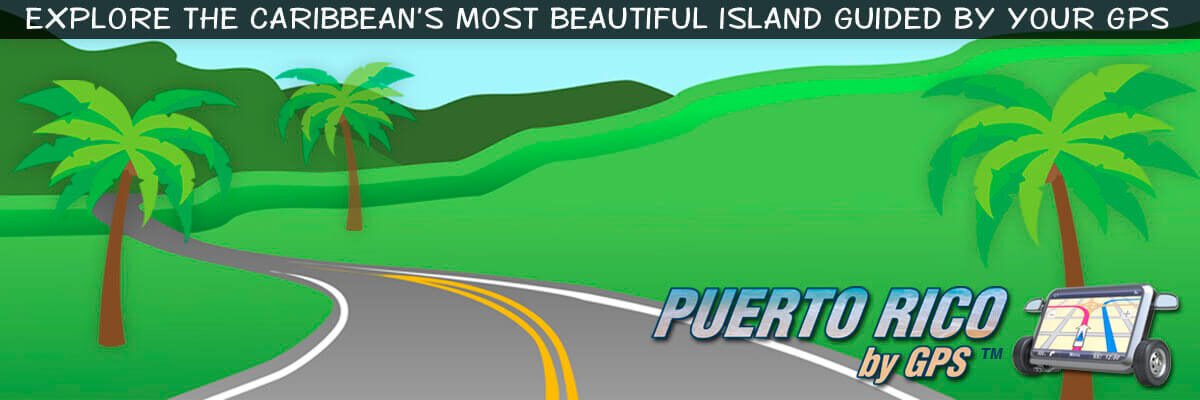
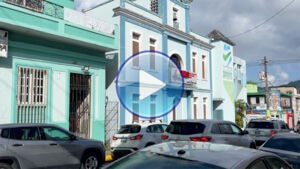
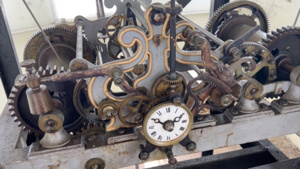
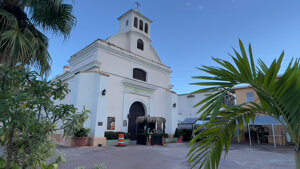
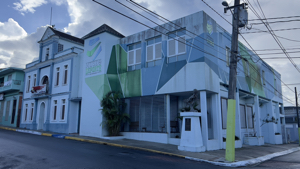









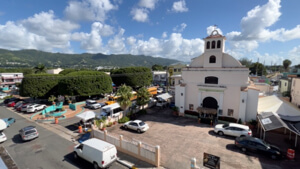
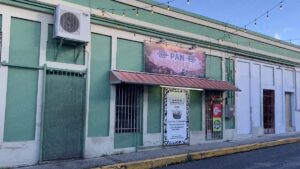
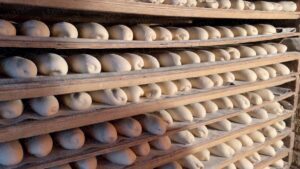
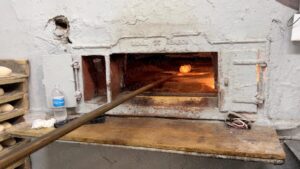
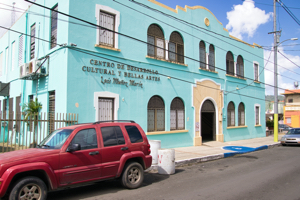
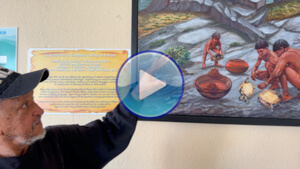
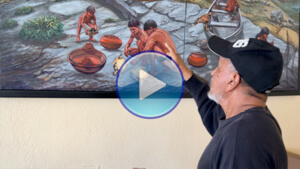
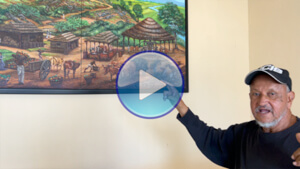
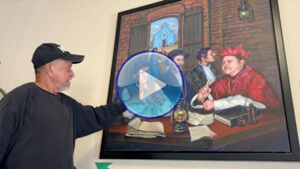
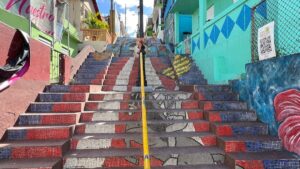
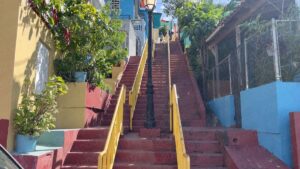
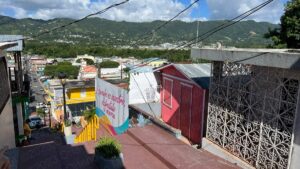
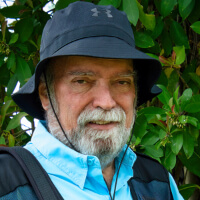
Fantastic and excellently done; congratulations at last someone made justice to Gurabo. It happens to be that Mr. Santos and I are very close friends. He has been for the last 15 years or so documenting Gurabo’s History. So he is about to finish and publish a book with all the data, from primary sources of the History of Gurabo. With this, the myth that Gurabo is or was a neighborhood of Caguas will be destroyed. That is Mr. Santos, a true gurabeño, faithful to the History of his hometown and one of its finest citizens; if not the most. An accomplish painter that has devoted his talent and time to his Gurabo and its History, but mist of all a fine friend.
Rubén was totally a joy to work with. The rest of the people at their little tourism office too. It’s a great town that few people talk about. We had a great time.